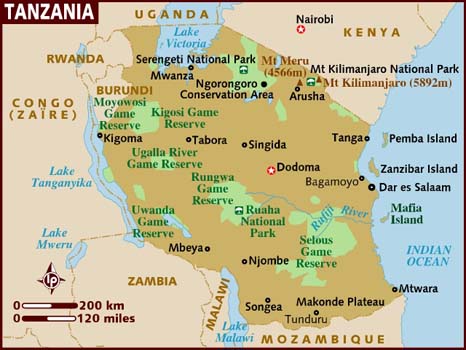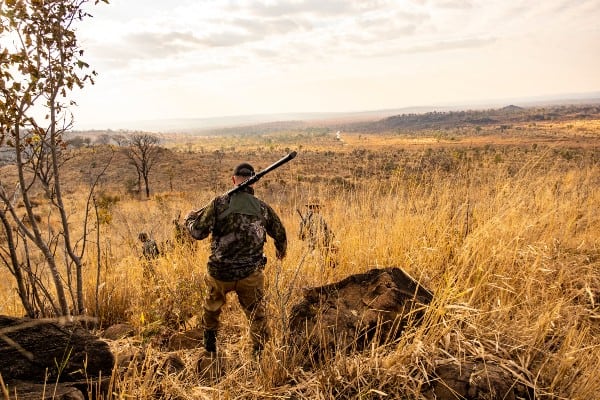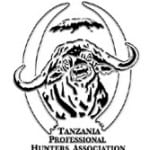Hunting in Tanzania
Tanzania Hunting
Tanzania’s numerous wildlife protection areas include National Parks, Game Reserves, Game Controlled Areas, Open Areas and the exclusive Ngorongoro Conservation Area. However, none of these wildlife areas are fenced so the game is free to move wherever conditions are most attractive. Hunting is only permitted in Game Reserves, Game Controlled Areas and Open Areas. The differences between these, the twelve National Parks, and the Ngorongoro Conservation area are described here.
National Parks – Total exclusion of human activity apart from tourism and wildlife research. Wildlife totally protected.
Ngorongoro Conservation Area – Controlled grazing of livestock and human settlement permitted but wildlife totally protected.
Game Reserves – Total exclusion of human activity apart from tourism and wildlife research. Hunting is allowed by permit. Game controlled Areas – Human activity and settlement allowed but wildlife protected. Hunting is allowed by permit.
Open Areas – Hunting and tourist activities allowed by permit.
Airlines
Airlines require that firearms and ammunition be checked. Firearms should be unloaded and securely cased with the ammunition in a separated container. You must, of course, advise commercial airlines that you are traveling with firearms and ammunition. Each airline has stringent restrictions as to weight and packaging. Check there with your intended carrier at least two weeks before departure.
Firearm Permits
Permits cost US$120 per gun. You outfitter will normally pay these fees in advance of your arrival and bill you at the end of you safari.
Trophy Documentation
CITES import permits are required for Appendix 1 – elephant and leopard – trophies are collected while on safari.To export you trophies you must be in possession the relevant CITES or trophy Export permits, issued by the relevant Management Authority (Wildlife Division). Without the relevant permits you trophies cannot be exported from Tanzania. In view of these various complications involved with obtaining CITES Import permits, hunters are advised to select taxidermists in the country of final destination before commencing their safari. The local taxidermist will then be able to provide advise on any particular CITES regulations. It is also important to advise your outfitter, in advance, of any peculiarities relevant to the import trophies.
History
Tanzania is the “cradle of mankind” for it was here, in the Olduvai Gorge, that Dr. Louis Leakey discovered the fossilized remains of Homo habilis, or “handy man,” calculated to be 1.75 million years old and the fore- runner of modern man. Tanzania was, and still is, occupied by 120 ethnic groups. Arab merchants visited the coast some 2,000 years ago and settled in Zanzibar around the eighth century AD late establishing trade routes into the interior. The inter-marriage of Arabs and local people created a new people with their own language – Kiswahili (Swahili) whose word for a journey – safari – has became the international description of a trip to the wild.
The Portuguese established temporary settlements in the 16th century, supplanted by the Omanis in the late 17th century who developed the infamous slave trade. The scramble for Africa by the European powers at the end of the 19th century led to occupation of the mainland by Germany although Zanzibar became a British protectorate.
After World War I, Germany was forced to surrender its territory to the British. Tanganyika, as the mainland was then known, achieved independence in 1961. Zanzibar became independent two years later and shortly afterwards joined with the mainland to become the United Republic of Tanzania.
Geography
Tanzania covers 945, 000 sq km making it the largest country in Eastern Africa. Just South of the equator, it borders Kenya and Uganda in the north; the Democratic Republic of the Congo, Rwanda and Burundi in the west; and Zambia, Malawi and Mozambique in the south, and is therefore a splendid centre from which to explore eastern, central and southern Africa.
Through the interior runs the Great Rift Valley, that vast fault-line down the spine of Africa that, in Tanzania, has created Ngorongoro Crater and Lake Tanganyika. The Central plateau (1,200m above sea level) is a huge expanse of savannah and sparse woodland. To the north, the 5890-mete (19,340 ft) Mount Kilimanjaro rises, the highest mountain in Africa.
While the interior is largely arid, the 800 kilometer coastline is lush and palm-fringed as are the islands of Zanzibar, Pemba and Mafia.
Climate
The coastal areas are hot an humid with an average day time temperature of 30 C. Sea breezes make the climate very pleasant climate from January to September, with temperatures averaging around 20 C. Temperatures vary around Kilimanjaro according to the season registering a low 25 C during May- August rising to 22 C during December – March.
For the whole country the hottest months are from October to February. The Main, long rainy season is from mid-March to late May.
International Flights
British Airways fly three times weekly from Heathrow to Dar es Salaam. Total flying time is 9 hours 40 minutes.
Other carries operate to Tanzania via Europe: KLM Royal Dutch Airlines (from Amsterdam) to Dar es Salaam and serves Dar Es Salaam and Zanzibar via Dubai. Tanzania can also b reached via African gateways served by Air Zimbabwe, Egypt Air, Ethiopian Airlines, Kenya Airways and South African Airways.
Regional carriers into Tanzania include Airkenya, operating from Nairobi’s Wilson Airport, in Nairobi, to Kilimanjaro. Domestic carriers precision attractions and game parks in Tanzania.
International Airports
International flights server Dar es Salaam, eight miles from the city centre and Kilimanjaro, 31 miles from Arusha. Zanzibar airport is five miles from Kisauni.
Passports / Visas
Most visitors require visas with the exception of citizens of certain countries of the Commonwealth. It is advisable to obtain them in advance from the Embassies and High Commissions as several airlines insist on them prior to departure. They can be also obtained on arrival at Dar es Salaam and Kilimanjaro international airports and at the Namanga Gate on the Tanzania/ Kenya border.
Requirements may change so you are advised to contact the appropriate diplomatic or consular authority before finalizing your travel arrangements.
Immunization / Health
Visitors from countries infected with cholera and yellow fever must produce international certificated of vaccination, this is particularly relevant for those traveling from neighbouring African countries.
The UK Department of Health recommends vaccinations against hepatitis A, polio and typhoid. It is essential for visitors to take a course of anti-malaria tablets, commencing two weeks before travel.
Modern medical services are available in Dar es Salaam and other major centers. Thee are only a limited number of chemists in the country, so visitors are advised to bring their own medicines with them.
Language
English is widely spoken but few words of Swahili are always appreciated.
Currency
The unit of currency is the Tanzania shilling which is divided into 100 cents. Visitors can take in any amount of foreign currency, no currency declaration is required, but import and export of Tanzanian currency is illegal. Most major currencies – particularly US dollars – and travellers’ cheques are accepted and are convertible at banks and Bureaux de change in th main towns and tourist areas. Credit cards are not widely accepted and carry poor exchange rates. Visitors will probably be expected to pay park entrance fees in foreign currency. Do NOT change money in the street however favorable the rate appears.
Airport Tax
An airport tax of US$30 is levied, which may be included in the price of the air ticket.







